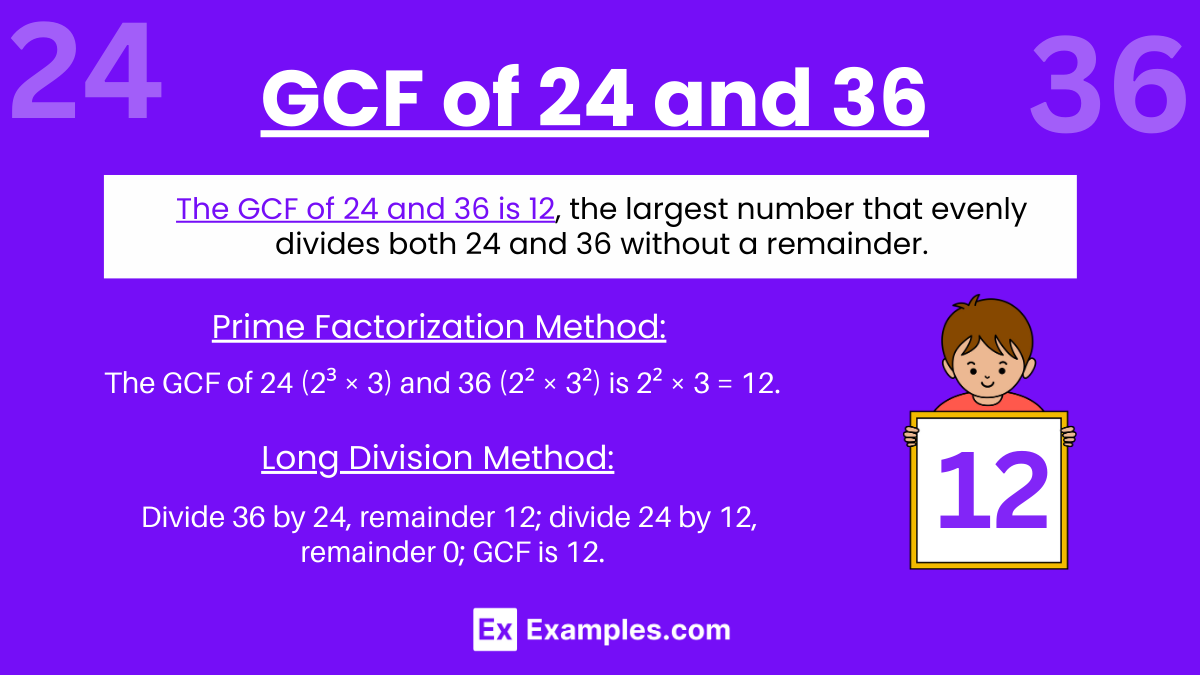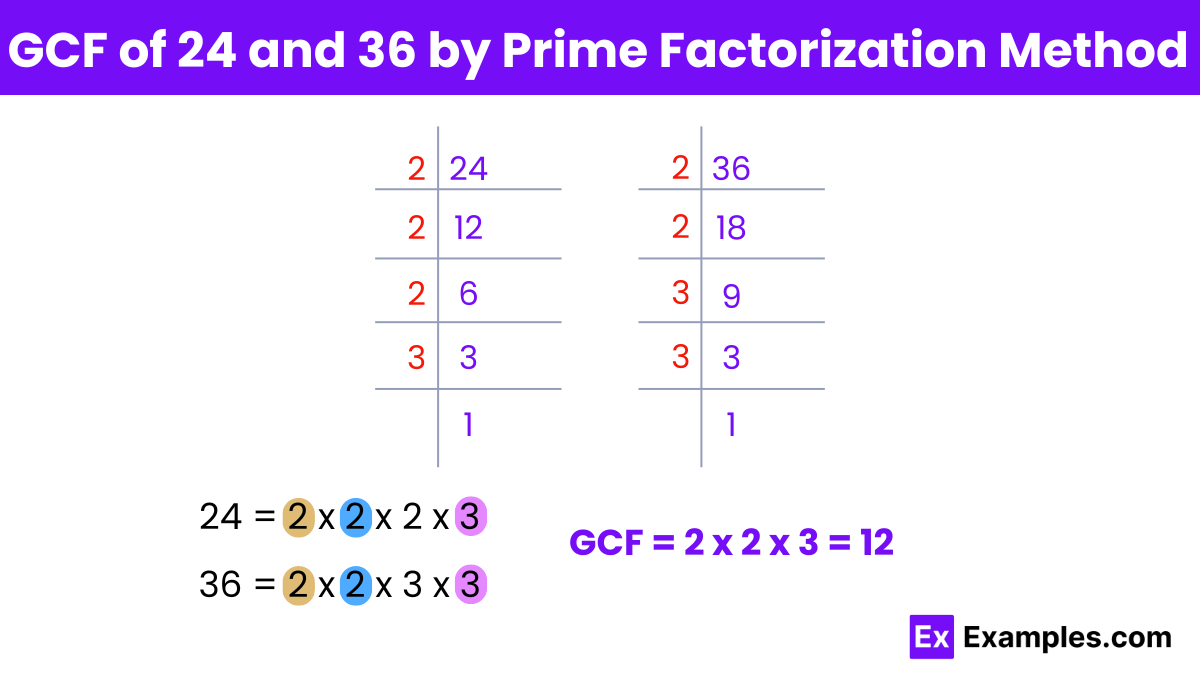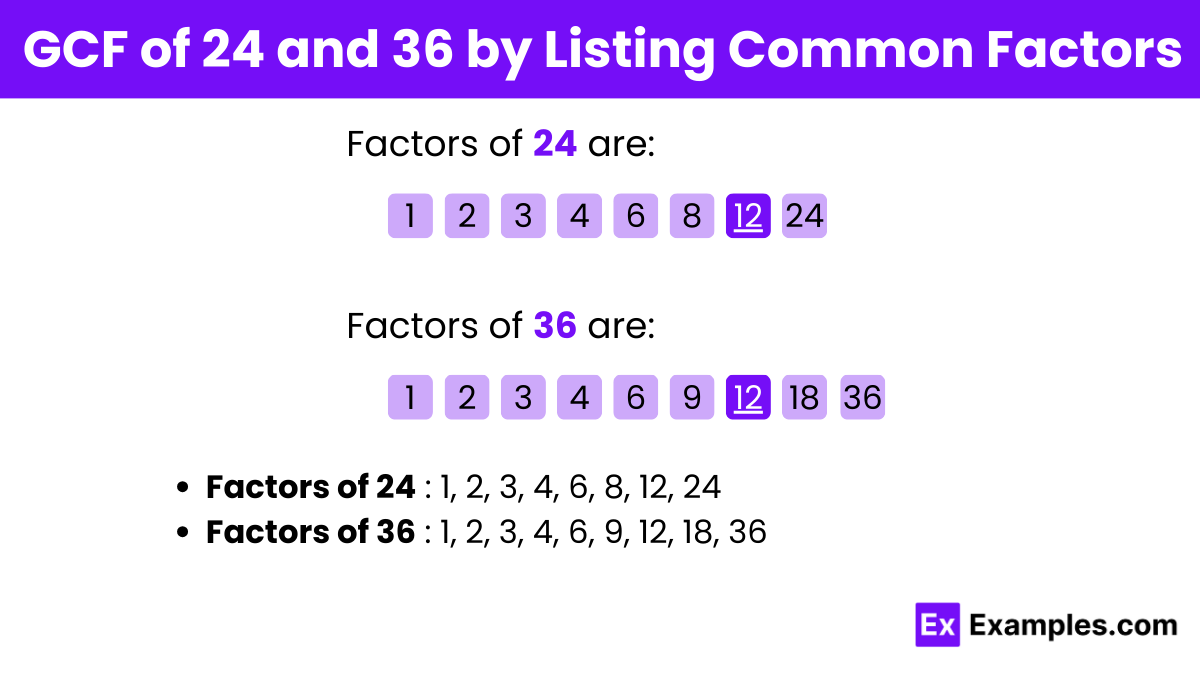What is the GCF of 24 and 36?
6
12
18
24


The Greatest Common Factor (GCF) of 24 and 36 is the highest number that can evenly divide both 24 and 36 without leaving a remainder. Understanding the concept of the GCF, also known as the Greatest Common Divisor (GCD), is essential in mathematics, especially in number theory and algebra. The factors of 24 include 1, 2, 3, 4, 6, 8, 12, and 24, while the factors of 36 are 1, 2, 3, 4, 6, 9, 12, 18, and 36. The GCF is a foundational concept that helps simplify fractions, solve equations, and understand relationships between numbers. To find the GCF of 24 and 36, three popular methods are used: the long division method, the prime factorization method, and the Euclidean algorithm.
The factors of 24 are 1, 2, 3, 4, 6, 8, 12, and 24, while the factors of 36 are 1, 2, 3, 4, 6, 9, 12, 18, and 36. The Greatest Common Factor (GCF) of two non-zero integers, 24 and 36, is the largest positive integer, 12, that can divide both 24 and 36 without leaving a remainder.


The long division method is a straightforward approach to find the Greatest Common Factor (GCF) of two numbers. Here are the steps to find the GCF of 24 and 36 using this method:

The numbers 24 and 36 share six common factors: 1, 2, 3, 4, 6, and 12. Among these, the largest common factor is 12. Therefore, the greatest common factor (GCF) of 24 and 36 is 12.
No, 24 is not a factor of 36 because 36 divided by 24 does not result in an integer without a remainder.
The LCM of 24 and 36 is 72, calculated by finding the least common multiple of their prime factorizations or using the formula LCM = (24 × 36) / GCF.
The GCF helps in simplifying fractions and solving problems involving divisibility.
Yes, using the Euclidean algorithm, the GCF is found by repeated subtraction or division.
Yes, the GCF (Greatest Common Factor) and GCD (Greatest Common Divisor) are the same.
Text prompt
Add Tone
10 Examples of Public speaking
20 Examples of Gas lighting
What is the GCF of 24 and 36?
6
12
18
24
Which of the following numbers is a factor of both 24 and 36?
8
14
20
22
If you divide 24 and 36 by their GCF, what do you get?
2 and 3
4 and 6
6 and 9
12 and 18
What is the result of multiplying the GCF of 24 and 36 by 3?
18
24
36
30
The product of 24 and 36 divided by their GCF is:
36
48
72
108
Which pair has a GCF of 12?
18 and 24
24 and 36
30 and 45
20 and 40
The sum of the factors of the GCF of 24 and 36 is:
18
24
28
32
Which number is not a factor of the GCF of 24 and 36?
1
2
5
6
The GCF of 24 and 36 is also a factor of which of the following?
50
60
70
80
If you add the GCF of 24 and 36 to 15, what is the result?
24
27
33
24
Before you leave, take our quick quiz to enhance your learning!

